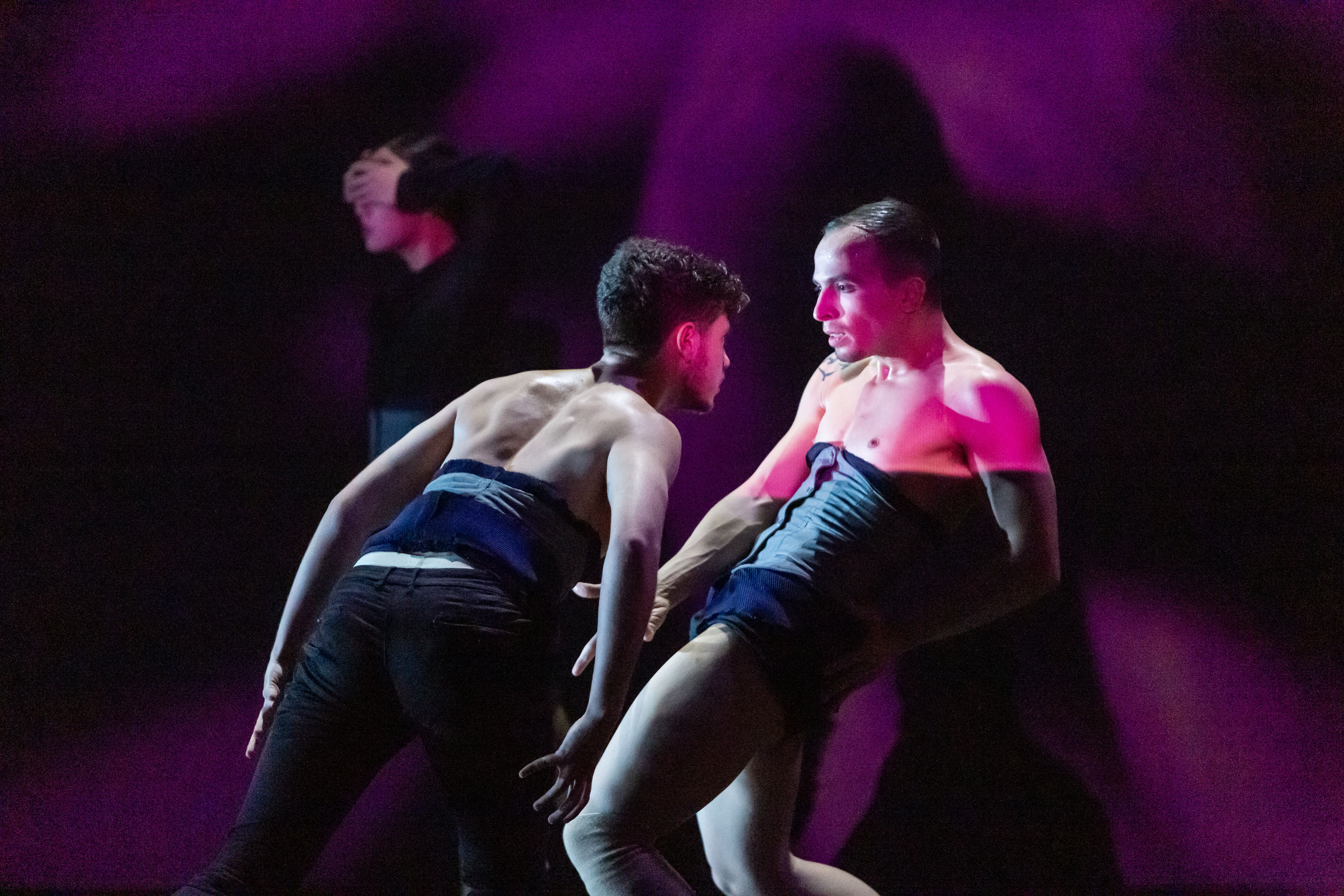White Face: A Performance of Contrasts and Catharsis
The new program from Kamea Dance Company is a blend of two complementary pieces. “White Face,” a gripping work by the company’s artistic director, Tamir Ginz, opens the performance, followed by “Gnawa,” the delicate creation by Spanish choreographer Nacho Duato, which brings the evening to a close.
Kamea’s new program takes the audience on a journey between frustration and hope, pain and healing, from the fragmented to the whole.
At the core of the program are two pieces—both well-rounded and deeply intentional, yet vastly different from each other. The first is “White Face,” by the company’s artistic director Tamir Ginz, and the second is “Gnawa,” an iconic piece by Spanish choreographer Nacho Duato.
From the very first moment to the final beat, “White Face” gives no respite to the audience. It keeps them tense, in a constant state of unease. The piece portrays a dystopia—a harsh, alienated reality marked by hostility between people, between individuals and their surroundings, and within the self.
The performance is accompanied by video art showcasing faces filled with frustration, screaming, and suffering—faces distorted by the very anguish they reflect.
This distortion is echoed in the music, which offers no relief to the ear. It blares loudly, assaulting the senses with its jarring dissonance. All of this forms the backdrop to the dancers’ bodies, whose movements are twisted and on the verge of unnatural. Their bodies bend and push to the limit, like someone enduring excruciating pain.
The physicality of the dance is intense. The interactions between the dancers resemble combat—both in the fiery looks they exchange and in their struggles, their dripping sweat, and the constant state of unrest that offers no catharsis.
A prominent motif in the piece is the covering of faces—again and again, the dancers hide their faces with their hands, pacing feverishly across the stage, hinting at their inability to face reality.
Visually, it evokes images of prisoners, perhaps captives—an unsettling analogy that calls to mind the recent tragedies of October 7th. This is not a piece that seeks to please. It strikes hard, straight to the gut.
The second work of the evening is a stark contrast, making it a perfect companion for such a program. “Gnawa,” created by Nacho Duato in 2005 for Hubbard Street Dance Chicago, offers a dance interpretation of architectural beauty.
This piece is soft and rounded. The Moroccan music, with its origins in sub-Saharan African slaves, combined with the dancers’ movements, creates the arabesques of Spain and North Africa.
It is a comforting, pastoral piece—almost utopian—a world filled with solace.
What’s interesting is that while the movements in “Gnawa” are modern, the overall feeling is that of classical dance, a constant floating sensation that forms and reforms shapes—like a kaleidoscope of colors and patterns.
“Gnawa” acts as the catharsis to “White Face,” making Kamea’s choice to pair the two in a single evening so fitting.
Beyond their extraordinary physical abilities, the dancers of Kamea showcase a broad range of physical and performative skills in this program. Modern dance has become a home for versatile performers, each unique, creating something that transcends dance—they create an experience.

